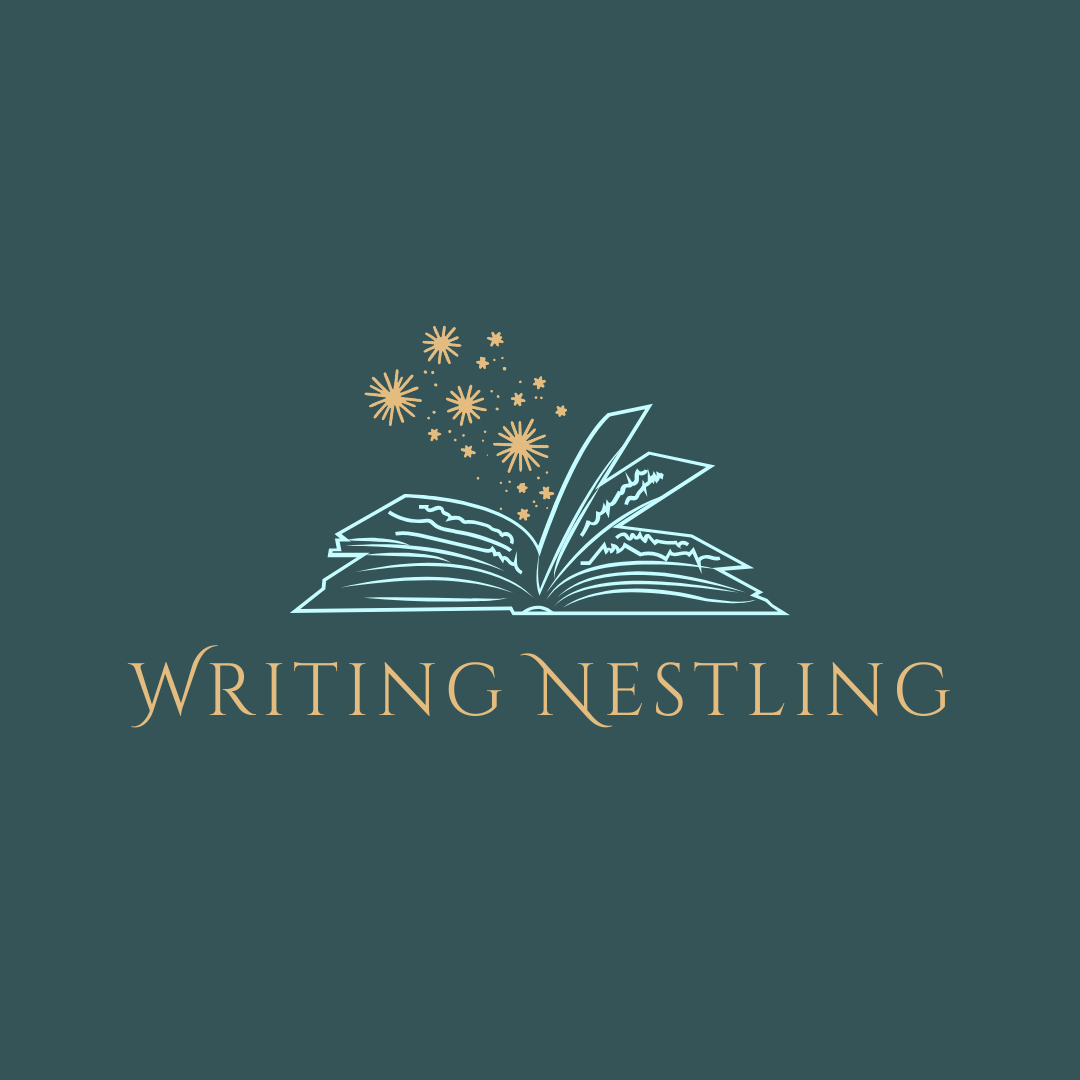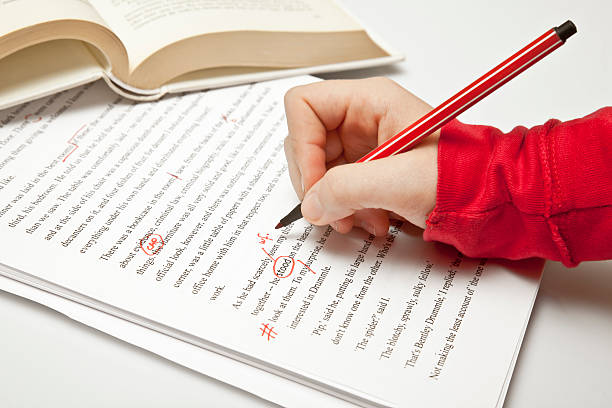How To Improve Descriptive Writing (12 Best Tips To Improve)
How To Improve Descriptive Writing
How To Improve Descriptive Writing: Welcome to the enchanting journey of refining your descriptive writing skills—a voyage that transcends the mere arrangement of words and delves into the realm of crafting vibrant, immersive narratives.
Descriptive writing is the art of weaving a tapestry of words that not only communicates but captivates, transporting readers to the landscapes of your imagination.
In this guide, we will embark on a quest to enhance your descriptive writing prowess, exploring the nuances of language, the alchemy of imagery, and the symphony of senses.
Whether you’re a seasoned wordsmith seeking to polish your craft or an aspiring writer eager to unlock the secrets of evocative prose, join us on this odyssey of exploration and refinement.
From understanding the core elements of descriptive writing to hands-on exercises and a treasure trove of resources, this guide is designed to be your compass in the literary landscape, navigating the terrain of creativity and expression.
So, let the adventure begin, as we unravel the mysteries of descriptive writing and unveil the magic within the written word.
How To Improve Descriptive Writing
Improving descriptive writing skills involves honing your ability to vividly portray scenes, characters, and emotions. Here’s a step-by-step process on How To Improve Descriptive Writing:
Read Widely
Exposure to diverse writing styles will expand your descriptive vocabulary and help you understand how different authors create vivid imagery.
Observe Closely
Pay attention to details in your surroundings. Notice the sights, sounds, smells, textures, and emotions associated with different settings and situations.
Use the Five Senses
Engage your readers by appealing to their senses. Describe not only what is seen but also what is heard, smelled, tasted, and felt. This adds depth to your writing.
Create a Strong Foundation
Before diving into elaborate descriptions, ensure a solid foundation for your writing. Develop a clear thesis or main idea to guide your descriptive passages.
Choose Strong Words
Opt for precise and evocative language. Replace generic terms with specific, descriptive adjectives and vivid verbs to create a more compelling narrative.
Show, Don’t Tell
Instead of stating facts, let your readers experience the details through action and sensory description. This makes your writing more immersive.
Organize Your Thoughts
Arrange your descriptions logically. Whether it’s a chronological order or a spatial arrangement, a well-organized structure enhances the impact of your writing.
Revise and Edit
Polish your work by reviewing and refining your descriptions. Ensure each word contributes to the overall picture you’re painting. Remove unnecessary details that don’t add value.
Seek Feedback
Share your writing with others and seek constructive feedback. Different perspectives can help you identify areas for improvement and provide insights into the effectiveness of your descriptive language.
Practice Regularly
Like any skill, descriptive writing improves with consistent practice. Set aside time to write regularly, experiment with different settings and scenarios, and challenge yourself to describe them in rich detail.
Read Aloud
Reading your writing aloud can help you identify awkward phrasing, pacing issues, and areas where descriptions may fall short. This also allows you to gauge the overall flow of your narrative.
Study Descriptive Writing Techniques
Explore books, articles, or online resources that specifically focus on descriptive writing techniques. Learn from successful authors and apply these techniques in your own work.
By following these steps and remaining dedicated to continuous improvement, you can enhance your descriptive writing skills over time.
Understanding Descriptive Writing
Understanding descriptive writing is like wielding a magic paintbrush for the mind. It’s more than crafting mere sentences; it’s conjuring entire worlds with words.
Imagine immersing yourself in a literary canvas where each brushstroke is a sensory detail, every color an emotion, and every stroke a vivid image.
Descriptive writing isn’t just about conveying information; it’s about weaving a tapestry that readers can feel, smell, taste, and hear.
It transforms language into an immersive experience, making the abstract tangible and the mundane extraordinary.
It’s the alchemy of turning words into a symphony of sensations, inviting readers to not just read but to step into the living, breathing landscapes painted by a writer’s imagination.
In the realm of descriptive writing, words are not just tools; they are spells that enchant and captivate, creating a dance of images that linger long after the reading is done.
Definition and Characteristics
Descriptive writing is an art form that transcends mere expression; it is the alchemy of transforming language into a vivid, tangible experience.
At its core, descriptive writing is a literary endeavor that seeks to convey a sensory-rich depiction of a subject, person, place, or experience. The hallmark of this craft lies in its ability to paint a mental picture through a careful selection of words that appeal to the reader’s senses.
Characteristics of masterful descriptive writing include the infusion of vivid imagery, where words evoke powerful mental images; the integration of sensory details, engaging readers through sight, sound, touch, taste, and smell; the skillful use of figurative language, breathing life into prose; and an unwavering commitment to conciseness and clarity, ensuring that each word serves a purpose in creating a resonant and immersive narrative.
In the world of descriptive writing, precision meets poetry, and language becomes a palette for crafting unforgettable impressions in the minds of readers.
The Writing Process
The writing process is not a mere sequence of keystrokes but a grand symphony of creativity, each note resonating with the echo of ideas.
It’s a journey that begins with the quiet hum of inspiration, a flicker in the mind that ignites the flames of creation. Picture a canvas waiting to be adorned, each stroke deliberate, each word a carefully chosen hue.
The drafting stage is the writer’s expedition into uncharted territory, an exploration of thoughts and emotions, giving birth to the raw substance of a narrative.
Crafting a strong introduction is akin to the overture of this symphony, setting the tone for the melodic journey that follows.
The body of the composition is the heart, where ideas intertwine, and paragraphs dance in harmony. The conclusion, a crescendo that lingers, leaves a lasting imprint on the reader’s mind.
The writing process is not a mechanical act but a dance of imagination, where the writer and the words entwine in a choreography that transforms thoughts into timeless art.
Pre-writing Strategies
Pre-writing strategies are the mystical rituals of the writing alchemist, the essential foundation upon which literary masterpieces are constructed.
It begins with the art of observation and reflection, where the writer becomes an attentive curator of the world’s nuances. Mind mapping and brainstorming follow suit, as ideas swirl and collide, giving birth to the raw materials of creativity.
Like a cartographer plotting a course, establishing a purpose and audience becomes the compass guiding the writer’s journey.
Pre-writing is not a linear path but a labyrinth of possibilities, where the maze of thoughts is navigated with intent. These strategies are the keys to unlocking the doors of inspiration, transforming a blank canvas into a vibrant tapestry of words.
In the realm of pre-writing, the writer dons the robe of the architect, sketching the blueprints of a narrative yet to unfold, laying the groundwork for a literary odyssey.
Drafting Techniques
Drafting techniques are the chisel and mallet in the sculptor’s hands, transforming raw ideas into refined literary works.
Crafting a strong introduction is akin to the opening notes of a symphony, setting the tone for the narrative to unfold. As the writer ventures into the drafting process, the challenge lies in organizing descriptive details with the finesse of a weaver threading a tapestry.
Each paragraph is a brushstroke, contributing to the larger canvas of the story. A cohesive body emerges, a testament to the writer’s ability to string together ideas seamlessly.
The conclusion, akin to a poignant finale, resonates in the reader’s mind, leaving a lingering imprint. Drafting is not a mechanical task but a dance with creativity, where the writer orchestrates words to evoke emotions and construct a narrative that captivates and resonates.
It’s the stage where imagination and language converge, breathing life into the blueprint laid down during pre-writing, evolving into a compelling and harmonious composition.
Polishing Descriptive Writing
Polishing descriptive writing is akin to a wordsmith wielding a magic wand, refining raw prose into a shimmering literary gem.
Revision becomes a journey of self-discovery as writers bravely subject their work to the scrutiny of peer review and feedback, reshaping sentences with the precision of a sculptor honing marble.
Self-editing techniques are the potions of perfection, stirring clarity into ambiguity and weaving eloquence into the fabric of language.
It’s an intricate dance with grammar and style, where sentence structures pirouette gracefully, and literary devices waltz through paragraphs.
The final touches are a meticulous selection of words, each chosen not just for meaning but for the subtle hues they cast upon the reader’s imagination.
Polishing descriptive writing is not merely refining; it’s an artful metamorphosis, a transmutation of prose into a literary jewel that dazzles and enchants its beholder.
Revision Strategies
Revision strategies are the virtuoso performance in the symphony of writing, where the raw notes of a first draft transform into a harmonious masterpiece.
It is the alchemical process of refining, reshaping, and breathing life into the written word. Peer review and feedback become the collaborative notes, enriching the composition with diverse perspectives and constructive critique.
Self-editing techniques serve as the conductor’s baton, orchestrating a seamless blend of clarity and coherence. Attention to detail is the hallmark, as writers navigate the labyrinth of sentences, ensuring each word carries its weight.
The revision process is a delicate dance with language, where redundancy is eradicated, and ambiguity is banished.
It is the fine-tuning of a narrative, enhancing its resonance and depth, turning a work-in-progress into a polished opus that resonates with the audience.
In the realm of revision, every edit is a brushstroke, contributing to the grand canvas of storytelling.
Expanding Vocabulary
Expanding one’s vocabulary is akin to opening a treasure chest of linguistic riches, where each word is a gem waiting to illuminate the vast expanse of expression.
It’s a linguistic odyssey, a journey beyond the familiar, where words cease to be mere tools and transform into kaleidoscopic brushes for the mind. Picture the mind as a garden, and each new word as a vibrant bloom, adding hues and fragrances to the landscape of thought.
Vocabulary expansion is not just about learning words; it’s about acquiring a palette of expression that allows ideas to dance in vibrant hues.
It’s the subtle art of linguistic architecture, constructing sentences with the precision of an artisan assembling a mosaic.
In the tapestry of communication, an enriched vocabulary is the thread that weaves eloquence, turning mundane conversations into symphonies of expression.
Embarking on the journey of expanding vocabulary is not a task; it’s a passport to a world where language is not just spoken but painted with the hues of a thousand words.
Importance of a Rich Vocabulary
The importance of a rich vocabulary transcends the mere acquisition of words; it is the very essence of effective communication and intellectual empowerment.
Like an artist’s palette, a diverse vocabulary offers an expansive range of colors to articulate thoughts, emotions, and ideas.
A rich vocabulary enhances precision, allowing individuals to express themselves with nuance and clarity. It is the cornerstone of eloquence, enabling one to navigate the subtleties of language with finesse.
Beyond communication, a robust lexicon fuels critical thinking and literacy, empowering individuals to comprehend complex texts, analyze information, and engage in meaningful discourse.
A rich vocabulary is not just a linguistic asset; it is a key that unlocks doors to broader knowledge, cultural understanding, and academic success.
It transforms language from a basic tool into a versatile instrument, empowering individuals to wield words with impact and sophistication.
In the grand tapestry of communication, a rich vocabulary is the golden thread that weaves brilliance into every conversation, making language not just a means of expression but a powerful vehicle for intellectual exploration and connection.
Word Exploration and Acquisition
Word exploration and acquisition are akin to embarking on a linguistic adventure, a journey into the vast and enchanting realm of language.
It is not a mere collection of words but a process of discovering treasures that illuminate the intricacies of expression. Imagine language as a vast landscape, and each word as a unique landmark waiting to be explored.
Delving into word origins, meanings, and nuances is akin to being an etymological detective, unraveling the tales hidden within the syllables. It involves an inquisitive spirit, a willingness to wander through dictionaries, literature, and diverse linguistic landscapes.
Word acquisition is more than expanding a personal lexicon; it is enriching one’s mental palette, providing an arsenal of tools to articulate thoughts with precision and grace.
The journey of word exploration is an ongoing odyssey, where every encounter with a new word is a step into uncharted linguistic territory, expanding horizons and deepening the connection between expression and understanding.
Engaging the Senses
Engaging the senses in writing is a kaleidoscopic plunge into the symphony of human experience. It’s not just about stringing words together; it’s about creating a sensorial feast that transcends the confines of the page.
Picture the words as brushes that not only paint vivid images but also release the heady aroma of nostalgia, the gentle touch of a breeze, the resonant melody of laughter, the rich flavor of memory.
It’s the art of crafting a literary banquet where readers not only see the scenes unfold but can taste the emotions and feel the echoes of a narrative on their skin.
Engaging the senses in writing is akin to alchemy, transforming the mundane into the extraordinary and rendering the intangible into an immersive tapestry that beckons readers to not just read but to step into the tantalizing world of the writer’s creation.
In this realm, words become conduits for an experience that transcends the limitations of language, inviting readers to not only comprehend a story but to feel it pulsating through their senses.
Incorporating Sight, Sound, Touch, Taste, and Smell
Incorporating sight, sound, touch, taste, and smell in writing is like conjuring a literary spell that transports readers into a multi-sensory universe. It’s not merely about describing scenes but about infusing the narrative with the very essence of human experience.
The words become a symphony, creating visuals that dance before the reader’s eyes, echoing with the resonance of laughter, tingling with the gentle touch of a breeze, carrying the savory aroma of distant kitchens, and leaving the lingering taste of nostalgia.
By engaging all the senses, the narrative transcends the boundaries of mere observation, inviting readers to taste the salt in the air, feel the warmth of sunlight, and savor the myriad textures of the world being presented.
In the hands of a skilled writer, incorporating the senses is the alchemical process that transforms words into a literary feast, where readers don’t just read a story but immerse themselves in a sensory-rich experience that lingers long after the last page has been turned.
Enhancing Creativity
Enhancing creativity is akin to cultivating a secret garden within the recesses of the mind—a flourishing sanctuary where imagination thrives and ideas blossom like vibrant blooms.
It’s not a rigid discipline but a wild dance with inspiration, an unrestrained symphony of thoughts waiting to be composed.
Imagine creativity as a mischievous sprite, darting between neurons, connecting seemingly disparate ideas, and sparking the genesis of innovation. To enhance creativity is to embark on an odyssey of exploration, a journey where the mundane is reimagined, and the ordinary is transformed into the extraordinary.
It’s about breaking free from the shackles of routine, embracing the unpredictable, and allowing the mind to wander in the kaleidoscopic realms of possibility.
Creativity, in its truest form, is a rebel, challenging conformity and daring to forge new paths. It’s the fusion of curiosity, courage, and chaos—a dynamic force that propels individuals beyond the realms of convention into the uncharted territories where brilliance awaits its discovery.
Encouraging Creativity in Descriptive Writing
Encouraging creativity in descriptive writing is akin to unlocking a portal to the boundless realms of imagination.
It’s about fostering an environment where words are not just tools but the vibrant colors on an artist’s palette. Writers are akin to architects, constructing worlds with the bricks of expression, and encouraging creativity becomes the cornerstone of this architectural endeavor.
It involves dismantling the walls of convention and welcoming the unpredictable, inviting writers to dance on the tightrope between the expected and the unprecedented.
A creative space for descriptive writing encourages the exploration of unconventional metaphors, the playful use of language, and the daring venture into uncharted territories of expression.
It’s about empowering writers to paint with the brushes of their unique perspectives, allowing the kaleidoscope of creativity to manifest in sentences that surprise, delight, and resonate.
In the world of descriptive writing, where each word is a brushstroke, encouraging creativity is the catalyst that transforms prose into a masterpiece, leaving an indelible impression on the canvas of the reader’s mind.
Real-world Application
Real-world application of descriptive writing is akin to a linguistic superhero stepping off the pages and into everyday life, caped with the power to transform the mundane into the extraordinary.
It’s not just about crafting eloquent sentences but about wielding words as tools that reshape reality. Picture the boardroom as a canvas where proposals become vibrant landscapes, or a scientific report evolving into a cinematic exploration of data.
In marketing, descriptive writing is the sorcery that turns products into enchanting experiences, and in journalism, it breathes life into news stories, making them pulse with relevance and immediacy.
From business reports to social media posts, the real-world application of descriptive writing is the magic wand that imbues communication with resonance, ensuring that ideas not only survive but thrive in the bustling landscapes of everyday conversation and professional interaction.
Professional and Academic Contexts
In the realms of both professional and academic contexts, descriptive writing emerges as a formidable tool, a versatile instrument that transcends the boundaries of mere communication.
In the professional arena, adept descriptive writing isn’t just a skill; it’s a strategic asset. From crafting compelling marketing copy that captivates audiences to drafting meticulous reports that elucidate complex concepts, the ability to wield words with precision and flair is a coveted skill.
In academic pursuits, descriptive writing is the beacon guiding students through the labyrinth of critical thinking and scholarly expression.
Whether penning research papers, articulating innovative ideas, or communicating complex theories, the art of descriptive writing is the bridge that connects intellect with articulation.
In both spheres, the narrative prowess to vividly depict ideas, persuade, and elucidate becomes a linchpin, propelling individuals toward success, recognition, and the realization of intellectual aspirations.
Resources for Improvement
Resources for improvement in descriptive writing are like a treasure trove waiting to be unearthed, offering writers the keys to unlock the full potential of their literary prowess.
Picture these resources as a secret garden filled with literary wisdom, where books on descriptive writing act as guides through the labyrinth of language, revealing the secrets of masterful prose. Online courses and workshops become the enchanted workshops where writers hone their craft under the guidance of seasoned wordsmiths.
Writing communities and feedback platforms are the bustling marketplaces, where ideas are bartered, critiques are offered, and camaraderie fuels the creative spirit.
In this landscape, knowledge isn’t a mere commodity; it’s the currency of improvement.
These resources are not static entities but dynamic allies in the writer’s quest for excellence, offering pathways to refinement, enlightenment, and the continual evolution of the descriptive writing craft.
Books on Descriptive Writing
Books on descriptive writing are the lanterns that illuminate the path for writers, guiding them through the enchanting woods of language and imagination.
Like wise mentors, these literary treasures unravel the intricacies of crafting vivid prose, offering insights into the artistry of evoking emotions and painting pictures with words. Each page is a beacon, revealing the alchemy of transforming ordinary sentences into immersive landscapes.
From classics that stand as timeless pillars of literary craftsmanship to contemporary gems that explore innovative techniques, these books are a library of inspiration.
They not only instruct on the technicalities of descriptive writing but also inspire a profound appreciation for the magic embedded in language.
To delve into these tomes is to embark on a literary pilgrimage, where writers not only absorb the wisdom of the masters but also discover their own voice amidst the pages.
Frequently Asked Questions about How To Improve Descriptive Writing
Why is descriptive writing important?
Descriptive writing is crucial as it engages readers by painting vivid pictures with words. It adds depth to narratives, making them more immersive and memorable.
What are the key elements of descriptive writing?
The key elements include detailed sensory descriptions, strong word choices, a focus on showing rather than telling, and a well-organized structure to enhance the overall impact.
How can reading help improve descriptive writing skills?
Reading exposes you to diverse writing styles, expands your vocabulary, and provides insights into how skilled authors effectively use descriptive language to engage readers.
Can anyone improve their descriptive writing skills, or is it a natural talent?
Descriptive writing is a skill that can be developed through practice and dedication. While some may have a natural inclination, consistent effort and learning can significantly enhance anyone’s abilities.
How do I effectively use the five senses in descriptive writing?
Engage the senses by incorporating details related to sight, sound, smell, taste, and touch. This creates a more immersive experience for the reader and enriches your descriptions.
What is the importance of revision in improving descriptive writing?
Revision is crucial for refining your descriptive writing. It allows you to eliminate unnecessary details, improve clarity, and ensure that each word contributes to the overall impact of your narrative.
Can you provide tips for choosing strong words in descriptive writing?
Opt for specific and evocative adjectives, as well as vivid verbs. Replace generic terms with words that create a more detailed and nuanced picture, enhancing the richness of your descriptions.
How do I balance showing and telling in descriptive writing?
While it’s important to show details through action and sensory description, some telling is necessary for clarity. Find a balance by allowing readers to experience the scene while providing essential information.
Is there a recommended structure for organizing descriptive writing?
The organization can vary, but it’s essential to have a clear structure. Consider chronological order, spatial arrangement, or a thematic approach to enhance the flow of your descriptive passages.
How can feedback from others help improve descriptive writing skills?
Feedback offers valuable insights and perspectives. Others can point out areas for improvement, helping you refine your descriptive language and enhance the overall effectiveness of your writing.
Are there specific techniques for practicing descriptive writing?
Regular practice is key. Experiment with different settings, scenarios, and perspectives. Challenge yourself to describe ordinary things in extraordinary detail to develop and refine your skills.
What resources can I use to study descriptive writing techniques?
Explore books, articles, and online resources dedicated to writing techniques. Analyze works by accomplished authors, participate in writing communities, and attend workshops or courses focused on descriptive writing.
Conclusion
In conclusion of How To Improve Descriptive Writing, improving descriptive writing is a gradual process that involves a combination of learning, practice, and self-reflection.
By immersing oneself in diverse literary works, observing the world keenly, and incorporating sensory details, writers can elevate their descriptive skills.
The careful selection of words, the art of showing rather than telling, and the meticulous organization of thoughts contribute to the overall effectiveness of descriptive writing.
Revision and seeking constructive feedback play pivotal roles in honing this craft, allowing writers to refine their narratives and create more compelling, immersive experiences for their readers.
Through dedication, consistent practice, and a willingness to learn from both successes and challenges, individuals can transform descriptive writing from a skill into a powerful tool for captivating and enchanting audiences.









